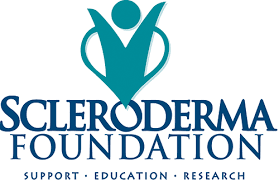 The 20th annual Scleroderma Foundation national patient education conference was held over this past weekend in Philadelphia. As always, it was excellent and very informative. Attendance was over 700 people, a record turnout. The Scleroderma Foundation does a great job on organizing and running these conferences and I recommend going to them if you are able to. Next year’s conference will be in Chicago, very close to me, but easy to get to from anywhere.
The 20th annual Scleroderma Foundation national patient education conference was held over this past weekend in Philadelphia. As always, it was excellent and very informative. Attendance was over 700 people, a record turnout. The Scleroderma Foundation does a great job on organizing and running these conferences and I recommend going to them if you are able to. Next year’s conference will be in Chicago, very close to me, but easy to get to from anywhere.
With the publication of our therapeutic plasma exchange (TPE) review paper in June (http://dx.doi.org/10.1177/2397198318758606), this year I was able to talk with researchers about TPE for the first time from a solid position. In the world of medical research, until something is published in a major, peer-reviewed medical journal, it doesn’t exist. As expected, some researchers were more open than others. I am doing follow-up emails with a few researchers and may have more information on their reactions in the near future.
Because I knew that there was a lot of interest in TPE among patients at the conference, I co-organized (along with Misty Rushing, founder of “Scleroderma and Functional Medicine”) a small dinner gathering to answer questions about TPE. Everyone who attended the dinner was asked to first view the TPE educational video (https://youtu.be/iWT0oW8FRdE) so we could focus on Q&A rather than the basic information that is in the video. We had a room reserved for 20 people and were hoping for at least a dozen. We ended up with an overflow crowd of 22 people! Q&A lasted for about 90 minutes, and many great questions were asked. Unfortunately, we were unable to record the Q&A. However, we are now planning on doing a live Q&A in the near future where people will watch the video first and then I will do live Q&A from submitted questions. I will announce details on this when we have more information.
After the dinner, I did high magnification nailfold capillary examinations for anyone who wanted to stay around. I purchased a system last year for some future research we are planning and wanted to get more experience doing nailfold exams. I provided no clinical interpretations, of course, since I am not a trained clinician. One thing I learned is that if the skin is visibly thickened in the nailbed area, you can’t see the underlying capillaries at 220x magnification because the skin is too thick! I am going to do a post in the next couple of days here and on Facebook showing you what normal capillaries look like and my own do as contrast at both 40x magnification and 220x magnification. A typical handheld system is about 20x, so you often can’t see any abnormalities at that magnification level. That is why nailfold capillary exams need to be done at around 200x magnification in early stages of SSc in order to be useful diagnostically.
I attended a number of excellent talks, including one on scleroderma renal crisis (SRC). This was timely since I am writing a patient education article on SRC at the moment. The incidence of SRC in patients with RNA Polymerase III antibodies is even higher than I realized. Last year at the conference, Dr. Hummers talked about SRC as part of her talk and indicated the need for daily blood pressure monitoring especially with this antibody. She indicated that you should check your BP in the morning and if suddenly elevated, recheck in the afternoon and if still high, get checked immediately. Dr. Varga (Northwestern) wasn’t comfortable with waiting that long. He suggested checking again in a couple of hours and if still elevated, get checked immediately. SRC truly is a crisis situation. Waiting a day can lead to major kidney damage. More on all of this in the forthcoming patient education article.
One other interesting tidbit was a study I had not read before on twin data. Concordance rates (both twins having SSc) for twins are low, about 4.7%. Interestingly, this was the same for both monozygotic (identical) and dizygotic (fraternal) twins, indicating that this is not a strongly genetic condition. Also, when both twins get SSc, they often end up with different antibodies. It is well known that when one person has SSc, some close order relatives are likely to have an autoimmune disease like RA or lupus or Hashimoto’s or Sjoegren’s, but rarely SSc. One possible interpretation of this is that if you have the genetic susceptibility to autoimmune diseases like these in general, the specific trigger may dictate which disease and antibody you end up with.
Overall, an excellent conference.
Ed Harris
Founder/CEO
